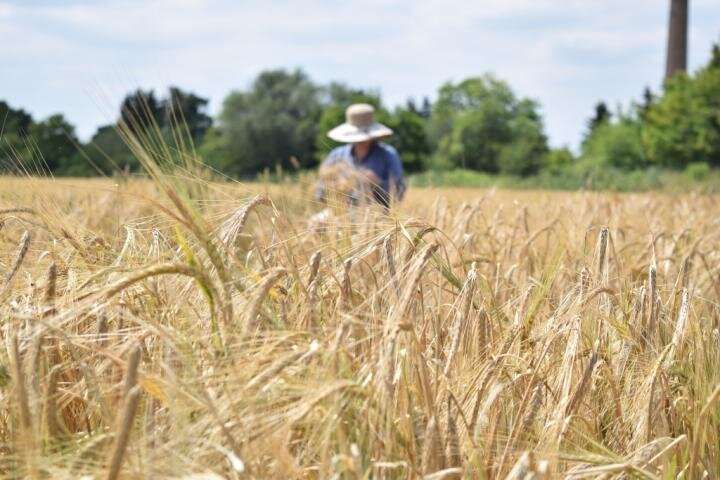Scientists discover gene associated with slim inflorescence shape of barley

The spikelet meristem (SM) plays a central role during the development of grass inflorescence. Meristems are plant cells or tissues that have the capacity to produce new organs—in this case, spikelets. To do this, however, cells destined to become SM must first attain the SM identity. This is achieved, among other things, by gene regulation. As a result, cells develop normally from meristem to organ. The process thus runs from the undifferentiated plant cell to the differentiated organ.
To better understand grass inflorescence architecture, geneticists study mutants. The COM1 barley mutant, for example, is compromised in such a way that the corresponding cells cannot perceive or convert the SM identity signal. "Ultimately, the signal transmission does not function properly, so that the cells cannot attain their correct cell identity," explains Dr. Naser Poursarebani, first author of the study and discoverer of the COM1 gene. In other words, the cell does not know what to do in this situation. "Thus, spikelet formation along the main axis of the barley spike, the rachis, cannot proceed normally."
Ultimately, instead of producing a spikelet, a kind of branch occurs that looks like a small secondary spike. "Such branching, however, is atypical for all spike-forming grasses belonging to the tribe Triticeae," says Prof. Dr. Thorsten Schnurbusch, head of the independent research group Plant Architecture, Heisenberg Professor of the IPK and the Martin Luther University Halle-Wittenberg and initiator of the study.
In barley, COM1 normally ensures that meristem cells develop into spikelets by influencing the properties of their cell walls and thus ultimately controlling cell growth. COM1's contribution to this identity signal is also its newly discovered function, which is not found in other grasses such as rice, maize, sorghum or twigs (Brachypodium distachyon L.). Barley COM1 function is thus fundamentally different from those grass species, in which the gene rather promotes the formation of inflorescence branches. "From a botanical point of view, COM1 is therefore in any case an important genetic factor for spike formation and shape, about which little has been known until now," explains Prof. Dr. Schnurbusch.
Barley belongs to the grass family (Poaceae) and was domesticated from the wild barley (Hordeum spontaneum) ancestor in the area of the Fertile Crescent about 10,000 years ago. Scientists suspect that the simplified, less complex spike architecture of Triticeae species is related to the spread of those species into zones with a more temperate climate and adaptation to cooler conditions. The newly gained insights into spike development can aid to better understand grass inflorescence evolution but possibly may also help to increase barley's yield potential.
More information: Naser Poursarebani et al., COMPOSITUM 1 contributes to the architectural simplification of barley inflorescence via meristem identity signals. Nature Communications (2020). DOI: 10.1038/s41467-020-18890-y
Journal information: Nature Communications
Provided by Leibniz Institute of Plant Genetics and Crop Plant Research


















